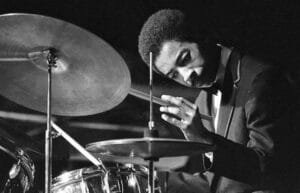Have you ever wondered what it takes to redefine a musical genre wholly, making an indelible mark that echoes through time? For Tony Williams, it was more than just playing the drums—it was about pushing boundaries and crafting a legacy that went beyond the beat. In “Tony Williams: Beyond The Beat,” we’re going on a journey to uncover how this incredible jazz artist shaped not only the sound of his music but also the world around him. We’ll explore the man behind the music and delve into his notable contributions to jazz and culture as a whole.
The Early Beats: Tony Williams’ Introduction to Jazz
Every legend has a beginning, and Tony Williams’ journey into jazz started remarkably early. Born in 1945 in Chicago, his early life was steeped in a rich musical environment. By age eight, he was already making music, thanks to the guidance and inspiration from his father, Tillmon Williams, who was a saxophonist. These formative years were crucial, as they laid the groundwork for Williams’ understanding of rhythm and melody.

An Emerging Prodigy
Williams moved to Boston as a child, where his passion for jazz began to take shape. While other children were dabbling in sports or exploring hobbies, Williams was honing his skills on the drums. His talent was unmistakable, and by the age of 13, he had caught the attention of jazz enthusiasts. At 16, he had started making waves in the jazz scene, playing with renowned artists such as Sam Rivers. Can you imagine being a teenager and already sharing the stage with seasoned musicians? That was the life of Tony Williams.
Mastering the Craft: The Miles Davis Years
Tony Williams’ career hit an important milestone when he joined the Miles Davis Quintet in 1963. It was a turning point not only for him but also for the jazz genre. With Williams as the drummer, the quintet explored new musical territories, injecting fresh energy into their performances.
Innovations in Jazz
Williams was a driving force behind several key innovations during this period. His drumming style, characterized by speed, agility, and complex rhythms, transformed the role of the drummer from mere accompanist to a pivotal player in jazz ensembles. This new approach to drumming added layers of depth and texture to jazz compositions, allowing for greater experimentation.
The albums recorded with the Miles Davis Quintet during this period, such as “E.S.P.” (1965) and “Miles Smiles” (1967), are cited frequently as exemplary works where Williams’ influence is palpable. His contribution pushed the boundaries of what jazz music could be, inviting listeners to experience the genre in a new light.
Beyond Miles: A Trailblazer in Fusion Jazz
As the 1970s unfolded, Williams was ready to forge his path, keen on exploring even more innovative musical landscapes. With the formation of his group, The Tony Williams Lifetime, he took his vision of jazz to the next level. It’s no overstatement to say that Williams was instrumental in the rise of jazz fusion, a genre that married jazz with rock, funk, and other musical styles.
The Creation of The Tony Williams Lifetime
Driven by his relentless curiosity and boundless creativity, Williams formed The Tony Williams Lifetime in 1969. The group became a breeding ground for innovation, playing a critical role in the evolution of fusion jazz. Albums like “Emergency!” showcased Williams’ brilliant integration of electric instruments with traditional jazz elements—a groundbreaking move at the time.
The interplay between guitar, drums, and keyboard in The Tony Williams Lifetime opened new possibilities for jazz music, making it more accessible and intriguing to a wider audience. For those eager for a deeper dive into this fusion genre, referring to AllMusic provides comprehensive insights into its evolution and impact.
Tony Williams: Composer and Collaborator
While Williams’ drumming prowess is often highlighted, his work as a composer and collaborator is equally impressive. His compositions transcended conventional structures, blending intricate rhythms with melodic elements that spoke to both the mind and soul.
Crafting Original Works
Throughout his career, Williams composed numerous pieces that became jazz standards. His compositions featured in the albums he created with his bands, revealing the layers of his creativity and his knack for storytelling through music. Williams’ ability to translate emotion into sound set him apart as not just a performer, but a genuine artist in every sense.
Collaborations with Jazz Greats
Tony Williams collaborated with a plethora of jazz luminaries, each collaboration adding another dimension to his illustrious career. His work alongside other jazz legends like Herbie Hancock and Wayne Shorter further cemented his status as a colossal figure in the jazz world. Each project was an opportunity for musical exploration, allowing Williams to continually evolve and refine his sound.
Breaking New Ground: The Legacy of Tony Williams
Today, Tony Williams is remembered not only for his groundbreaking innovations in jazz but also for his enduring influence on generations of musicians. His work transformed the jazz landscape, inspiring countless artists across genres to push their creative boundaries.
Influences and Inspirations
Williams took inspiration from a wide array of sources, including classical music and the cutting-edge sounds of his contemporaries. His ability to draw from varied influences and synthesize them into a unique musical voice is part of what made him an extraordinary artist.
Continuing Inspiration for Modern Musicians
Modern jazz musicians frequently cite Tony Williams as a pivotal influence. His innovative approach to drumming and composition laid the groundwork for new sub-genres within jazz and beyond. For aspiring drummers and jazz enthusiasts, studying Williams’ work offers invaluable insights into the art of music-making.
Tony Williams’ influence can also be seen in various educational institutions that focus on jazz studies. Programs often dissect his techniques to help new students understand the art of jazz drumming and composition. Websites like Jazz at Lincoln Center often host events and provide resources that explore Williams’ impact on jazz.
Conclusion: Tony Williams’ Enduring Legacy
In “Tony Williams: Beyond The Beat,” we’ve delved into the life and legacy of an artist who was never content with the status quo. From his early days of exploration in jazz music to his groundbreaking innovations with the Miles Davis Quintet and his trailblazing fusion efforts with The Tony Williams Lifetime, Williams’ impact is undeniable. His legacy continues to inspire and influence musicians around the world, demonstrating the power and potential of jazz as a constantly evolving art form.
Tony Williams was more than just a drummer; he was a visionary who expanded the boundaries of what music could achieve. His rhythm transcended the barriers of convention, resonating far beyond the beat.
Meta Description: Uncover the life and legacy of Tony Williams, a visionary jazz artist who broke musical boundaries, inspiring future generations beyond the beat.


